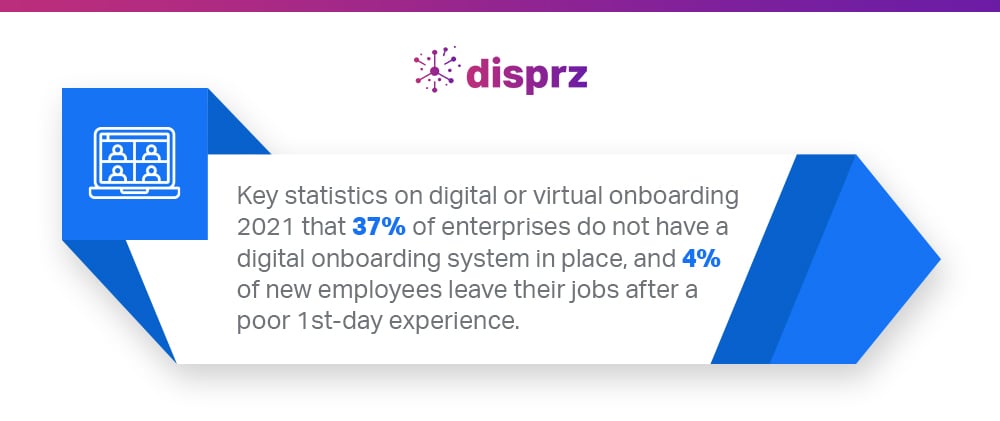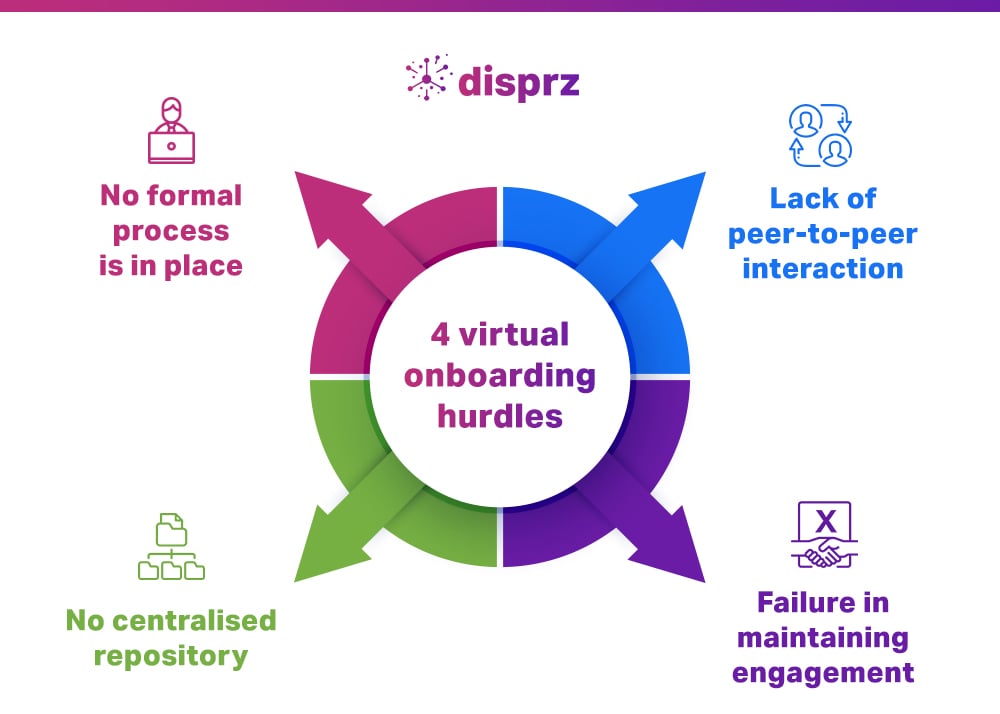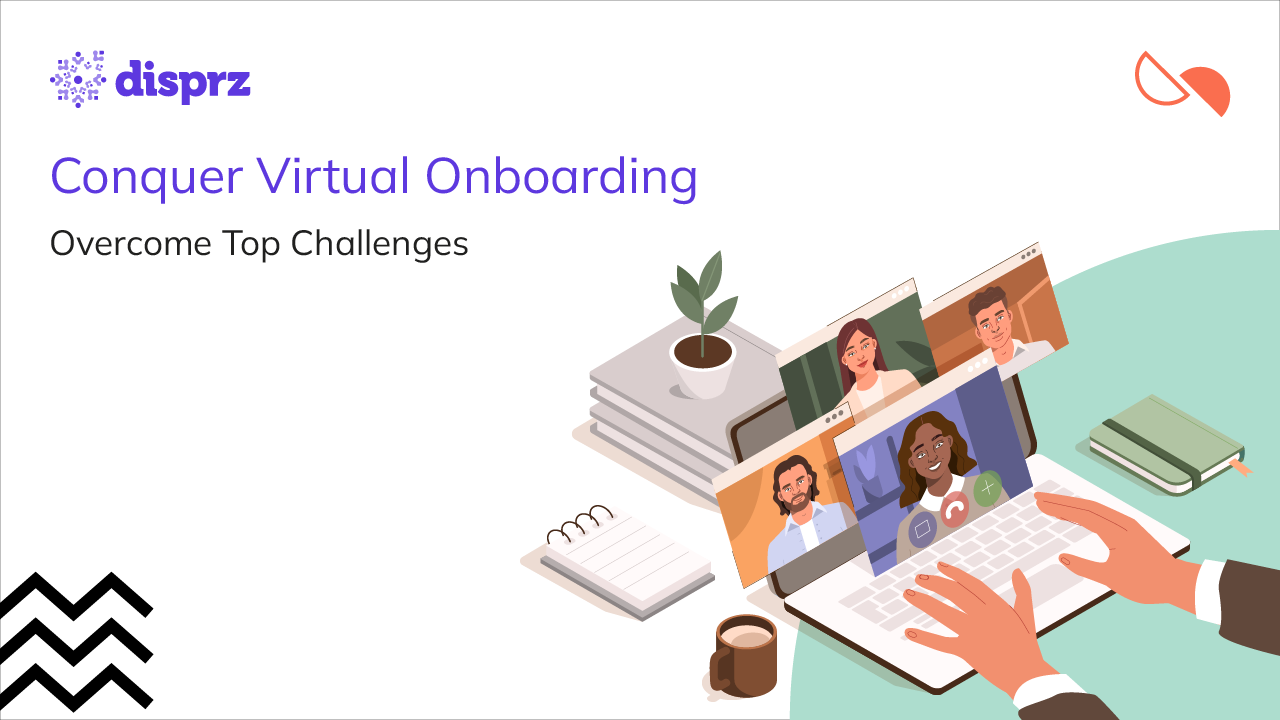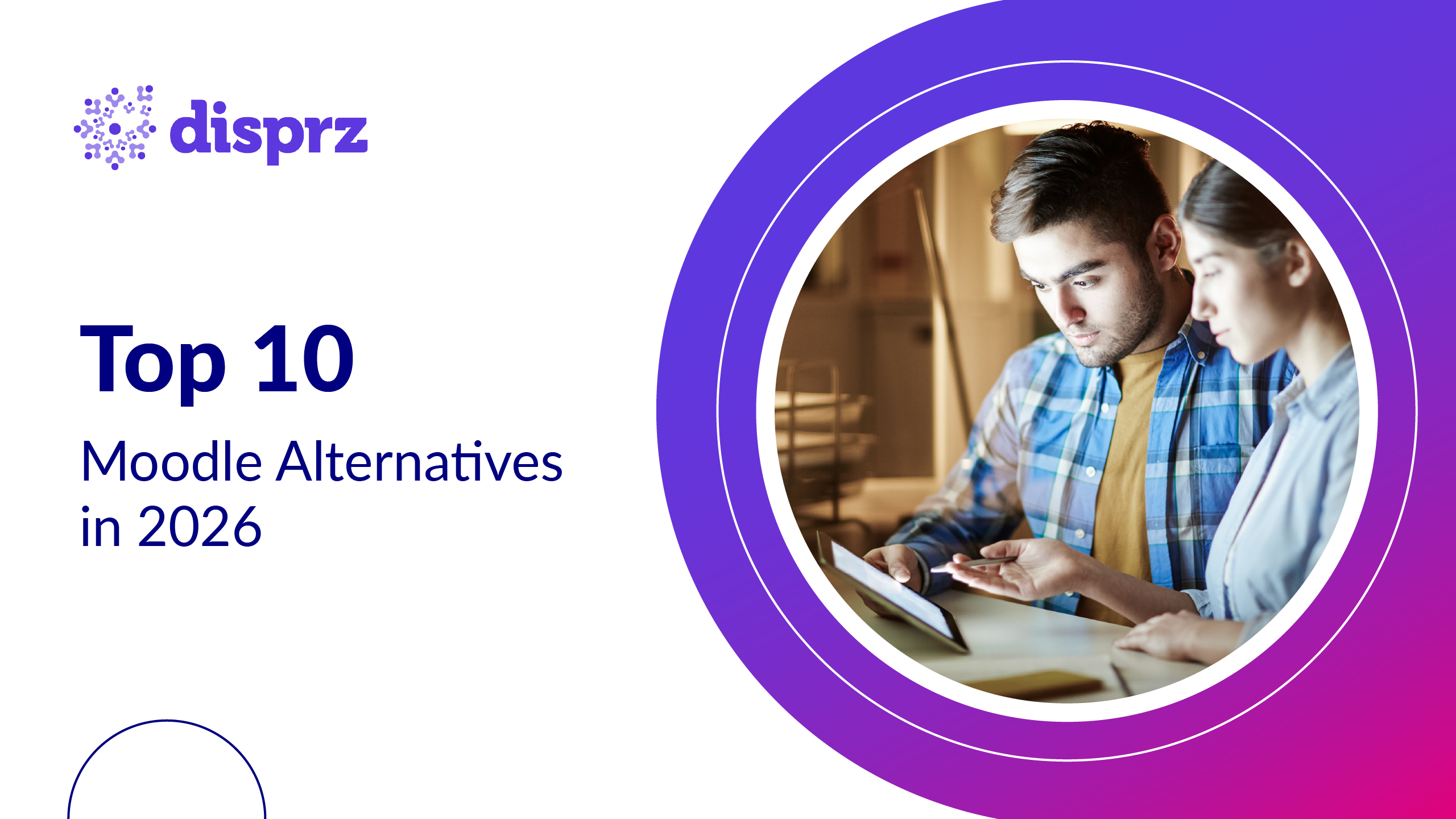Prior to the pandemic, there was often a stigma around employees working from home. However, Covid-19 broke the barrier that prevented remote working in the past and propelled companies to explore uncharted territory. Initially, it seemed temporary, but now it has become the new working culture. Employees are ready to quit their jobs rather than abandon work from home.
More than half (54%) of employees surveyed in APAC are likely to quit their current role post-pandemic if they are not offered continued flexibility in where and when they work.
To maintain an employee-first culture, companies either moved to a fully remote option or adapted a hybrid model. This shift wasn’t without it’s challenges, especially when it came to hiring new employees. Like many other changes post covid, the shift to a different way of onboarding isn’t an option but a necessity. Virtual onboarding is the need of the hour. Without much ado, let’s see how virtual onboarding is different from in-person onboarding and what are the solutions to the virtual onboarding challenges.
How is Virtual Onboarding Different from In-person Onboarding?
The first few months of an employee in a new company are critical as they have to absorb a plethora of information, understand complex processes and start contributing quickly. Without a clear direction, they might feel lost and demotivated.
In the office, your employees have a great opportunity to make new contacts and amass necessary information to settle seamlessly into a new role.
However, with the remote work culture, there is a communication gap. Often new hires have little to no interaction with other teams. The irony is that several companies fail to provide their new hires with networking opportunities to get acquainted with other teams during the onboarding process.

An ineffective virtual onboarding can create a sense of disengagement which can be overwhelming and isolating. Therefore it is pivotal to pay special attention to virtual onboarding to provide a high-quality experience to remote or hybrid workers.
According to a report by the Economic Times, even big names of the industry such as Procter & Gamble, Visa, Mahindra & Mahindra, Flipkart, and RBS India have made the shift from physical onboarding programmes to innovative, fully virtual experiences aimed at making new joiners who are working from home feel included and welcome
4 Virtual Onboarding Challenges and Their Solutions

You can set up your new hire for success with impactful virtual onboarding. Below are a few remote employee onboarding challenges and solutions to address them.
1) No formal process is in place for onboarding
One of the main virtual onboarding challenges is that no formal process is defined. The HR shares the documents to be signed over an email and introduces the new hire to the manager over the Zoom call. The manager provides basic information about the role, shares some generic product resources, and expects the new hire to start performing.
Solution
Create a structured onboarding journey. Have a clear timeline for the virtual onboarding of the new hire.
Determine whether it will be 30, 60, or 90 days long. More importantly, when will it begin?
Ideally, the virtual onboarding should begin prior to the employee joining the company. A day or two before the joining date, you can get all the generic documents signed, share company/product-related information, and provide the new hire with equipment such as a laptop, headset, company phone, etc., so that they can set up their remote workspace. Give them access to all the collaborative tools and easy-to-follow printed instructions for using them. Make sure you plan the first few weeks of the new hire:
For instance
First day – Schedule an e-meet with HR to understand the company’s policies, vision, mission, product/service remote working protocols and HRMS
Next two days – Schedule an e-meet with the manager, the team, and various stakeholders handling different operations
Fourth day – Provide in-depth information about the role and set clear goals and expectations
Fifth and sixth days – Acquaint them with the competitors, and customers and share case studies to help them understand how you address the pain points of your target audience
Second and third week – Regular virtual meetings with peers for knowledge transfer and hands-on experience on different tasks
Fourth week – Virtual meeting with the manager to evaluate the on-the-job performance and get feedback for filling performance gaps
2) Lack of peer-to-peer interaction for knowledge sharing
Either through water cooler conversations or while swinging by someone’s desk, knowledge is shared frequently at the workplace. Sometimes the new hires even get the opportunities of learning by osmosis (assimilation of ideas and knowledge by observing co-workers or product experts). Remote workers often miss out on such opportunities, which can be a detrimental virtual onboarding challenge. Unfortunately, some companies do not even focus on facilitating meaningful peer-to-peer interactions during virtual onboarding, and the new hires end up working in silos.
Solution
New employees need a virtual onboarding buddy that can be their support system during the initial few weeks of joining a company. The onboarding buddy is normally an existing employee who guides the new employee to ensure that the transition to the new role is smooth. Through dedicated job shadowing sessions virtually every day, the new hire can easily learn from the buddy.
New hire buddy programs are often effective as the employees are more comfortable asking questions to a peer rather than a mentor. The operational issues or product-related doubts can be dealt with expeditiously through such programs during virtual onboarding. Moreover, the buddy can introduce the new hires to other teams; this will help in expanding their networks.
3) No centralized repository for easy content access
The hire receives an employee handbook via email, a few product-related docs through Google chat, and relevant blog links during the Zoom call. It is infuriating to toggle between applications to find different onboarding documents while working remotely. The new hire ends up wasting time and this virtual onboarding challenge costs the company more resources.
Solution
Maintain a centralized content repository and streamline the virtual onboarding. A single platform where information is disseminated not only makes life easier for the new hire but also for the HR/L&D professionals who can track the progress with real-time analysis. Several onboarding technologies can help you here. However, instead of investing in a separate onboarding tool, it is better to opt for an L&D solution that offers virtual onboarding functionality along with several other valuable features to ensure continuous learning and growth of the new employee in the company.
4) Failure to maintain engagement during virtual onboarding
Engagement is often a missing factor in the remote onboarding experience. When the onboarding is conducted online, it is even more crucial to make it highly engaging to capture the interest of the new hire, which apparently most companies overlook.
Solution
Have engaging sessions with the new hire. You can start by taking feedback on the hiring and pre-onboarding process. Have regular pulse checks to stay updated on how the employee feels in the new company. After a week, you can have interactive virtual facilitation with all the new hires together, where you can have a quiz on how much they know about the company and product. Late provide daily bytes to enhance their knowledge in different areas of the company.
How Can LMS Resolve Virtual Onboarding Challenges?
The right technology can address these online onboarding challenges. The right platform can help in conducting an effective onboarding program that can translate into employee success. By designing a virtual onboarding process on cutting-edge technology like a Learning management system (LMS), you can help the new employees hit the ground running and become productive quickly.
With an LMS, you can easily curate and assign learning courses to employees and track their learning behavior with all the data on one platform. You can create microlearning modules that the new hire can access through mobile.
A Modern LMS like the one offered by Disprz enables you to launch online workflows that auto-assign 30-60-90 days of structured onboarding drip journeys to the remote workers with reminders.
Disprz also offers highly interactive solutions like Gamienar to make virtual onboarding more lively. You can engage the new hires through features like a roulette wheel, text wall, breakout rooms, live leaderboards, and sticky notes.
Moreover, you can empower each employee to get their answer quickly through a social learning platform. It is the best way to boost collaborative productivity and drive business impact.




.png?width=300&height=340&name=Buyer%E2%80%99s%20Guide%20for%20Learning%20Management%20Systems%20(LMS).png)





